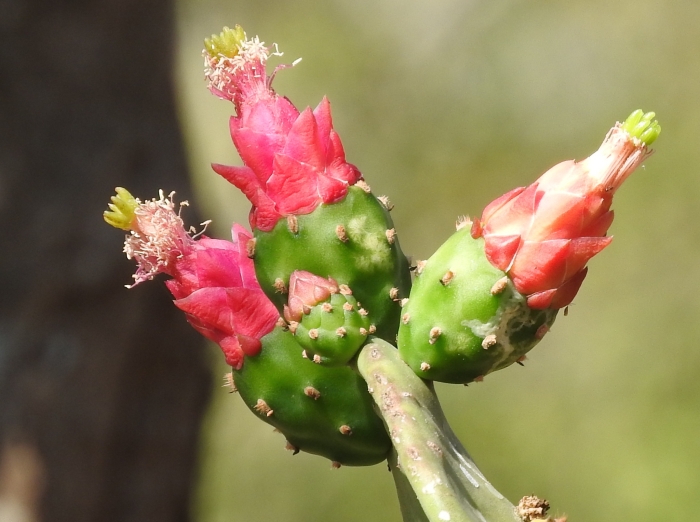Cochineal Nopal Cactus
(Opuntia cochenillifera)
Cochineal Nopal Cactus (Opuntia cochenillifera)
/
/

Francisco Farriols Sarabia
CC BY 4.0

























Estimated Native Range
Summary
The cochineal nopal cactus is valued for its drought tolerance and low maintenance requirements, making it suitable for xeriscaping and arid garden settings. It thrives in full sun and requires well-draining soil. Overwatering or poor drainage can lead to root rot. It is also known for its historical use as a host plant for the cochineal insect, which is harvested for carmine dye. In cultivation, it can be used as an ornamental plant or for the production of cochineal dye. However, it can become invasive outside its native range, so gardeners should consult local regulations before planting.CC BY-SA 4.0
Plant Description
- Plant Type: Shrub, Succulent
- Height: 3-10 feet
- Width: 4-10 feet
- Growth Rate: Moderate
- Flower Color: Pink, Yellow
- Flowering Season: Spring, Summer
- Leaf Retention: Evergreen
Growth Requirements
- Sun: Full Sun, Part Shade
- Water: Low
- Drainage: Fast, Medium
Common Uses
Drought Tolerant, Edible*Disclaimer: Easyscape's listed plant edibility is for informational use. Always verify the safety and proper identification of any plant before consumption., Fire Resistant, Low Maintenance, Rock Garden, Street Planting
Natural Habitat
Native to semi-arid highlands and tropical areas in Mexico
Other Names
Common Names: Prickly Pear , English Tungy , French Prickle , Nopal , Nopal Chamacuero , Opuntia , Nopal Cactus , Tuna Mansa
Scientific Names: Opuntia cochenillifera , Cactus campechianus , Cactus coccinellifer , Cactus cochenillifer , Cactus cochenillifer , Cactus cochenillifer , Cactus cochenillifera , Cactus subinermis , Cactus subinermis , Nopalea brittonii
GBIF Accepted Name: